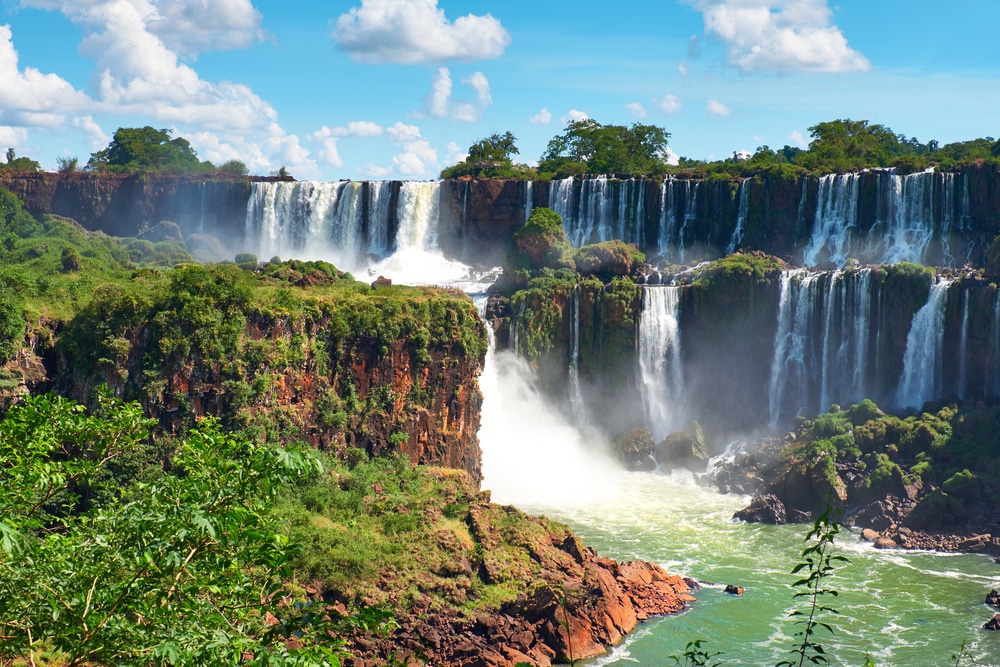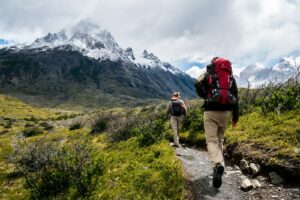It is possible to go discovering the world without damaging it and in this case travel to Brazil in a sustainable way? Unfortunately, the human presence and our unstoppable curiosity always generate repercussions on the environment that hosts us, but with the diffusion of responsible practices, public awareness and the application of policies aimed at environmental protection, the damage caused can be reduced and in some cases even transform tourism into a resource for the preservation of natural heritage.
L’ecotourism conveys all these inclinations. The ecotourist’s greatest motivation is the observation and appreciation of nature and the cultural traditions of the people who inhabit it. Embratur (Brazilian Tourism Office) – an agency affiliated with the Brazilian Ministry of Tourism for promotion and marketing activities of the territory – aims to promote the natural and cultural variety of Brazil while respecting nature. A task, despite the wealth of assets available, far from easy, given the profound contradictions on which the country is also torn in this field, as well as in the social and economic sphere.
Brazil is in fact the country with the highest rate of deforestation in the world. And while industrialization has brought enormous economic growth, pollution has endangered drinking water sources. Yet there is an eco-sustainable and eco-tourism soul, and the dramatic contradictions we are witnessing make it even more important to support responsible tourism so that it becomes an economic and social resource to promote the necessary environmental policies.
There is no shortage of development and promotion opportunities. In Brazil they are well found five different biomes, with incredible varieties of landscapes, vegetation and climate. In addition to having the largest forest in the world – the Amazon – the country is made up of mountains, beaches, rivers, waterfalls, dunes, creeks, ponds, caves, mountain ranges and plateaus. There are 8,500,000 square kilometers of natural parks, reserves and protected areas, of which seven have been declared a World Heritage Site by UNESCO. Here are some examples.
Have you found plane tickets? See also on Traveljourn
Read also: Discover the Exotic Marvels of Brazil: Must-See Attractions to Add to Your Bucket List
Foz do Iguaçu – Paraná
Beyond the immensity of the waterfalls, with 274 waterfalls and 70 meters of height, the Iguaçu National Park it is one of the most fascinating ecological reserves in the world. The park covers 185,000 hectares and contains 400 species of birds, 50 species of mammals and 257 species of butterflies and is one of the places to see on a trip to Brazil.

Pantanal – Mato Grosso and Mato Grosso do Sul
An area so diversified that it was divided by researchers into 11 specific areas, each with peculiar natural characteristics and ideal activities and periods for visits, as well as the offer of facilities for the practice of ecotourism. It is one of the best places for observing flora and fauna in Brazil.

Fernando de Noronha – Pernambuco
21 islands and an area of 26 square kilometers. The main island, the only populated one, is the same name as the park and extends for 17 square kilometers. Part of this island is home to the Fernando de Noronha Marine National Park, an environmental protection area since 1988 and a World Heritage Site since 2001. The purpose of the park is to protect fauna, represented mainly by the rotador dolphin and migratory birds. There are five paths that lead to different beaches which can be accessed subject to authorization issued by IBAMA (Brazilian Office of the Environment and Renewable Natural Resources).

Lençóis Maranhenses – Maranhão
An endless desert with thousands of intense blue-green lagoons and dunes that extend for 70 kilometers along the coast and push inland for another 50 kilometres. The Lençóis Maranhenses National Park was born in 1981 with the aim of protecting the 155 thousand hectares of this particular and unique ecosystem.

Bonito – Mato Grosso do Sul
Traveling to Brazil also means discovering unusual places like this region which surprises with its crystal clear rivers, caves and waterfalls which attract tourists from all over the world. You can go diving, walk along paths, observe flora and fauna, ride horses, arborists, climb and descend with inflatable boats. A model of sustainable tourism, Bonito has promoted a policy of environmental preservation. In fact, there is a maximum number of visitors per day who can access the area at particular times of the day and who are also prohibited from moving around the ecosystem without a local guide.

Abrolhos Marine National Park – Bahia
70 kilometers from the coast, the archipelago is made up of coral reefs, volcanic islands and a very rich marine fauna. The jubarte whale comes to breed here from July to November. Seabirds such as atobás, trinta-réis, fragatas and beneditos complete the scene.
National Park of Chapada dos Veadeiros and Emas National Park – Goiás
Located on an immense platform of quartz crystals that emerge from the ground, with its 60,000 hectares it is Natural Heritage of Humanity since 2001. The visits are carried out only with the accompaniment of specialized guides. The region is full of breathtaking scenery and diverse species of animals.

The Atlantic Forest Reserves – Bahia and Espirito Santo
They are a set of eight different protected areas located across the Brazilian states of Bahia and Espírito Santo, which cover a total area of approximately 112,000 hectares. They are mainly composed of Mata Atlantica, the typical Brazilian coastal rainforest, very rich in terms of biodiversity. Numerous animal and plant species are found here, many of which are endemic to the region, among the many reasons why it is worth traveling to Brazil.
The Southeast Atlantic Forest Reserves – Paraná and São Paulo
They are a set of 25 protected areas located in the Brazilian states of Paraná and São Paulo; they contain flora and fauna typical of the Brazilian Atlantic forest (Mata Atlantica). The reserves cover an area of 470,000 hectares and include landscapes of great beauty, ranging from mountains to wetlands, to islands covered with isolated peaks and sand dunes.
Mamirauá – Amazon
The Mamirauà Sustainable Development Reserve it is located in the heart of the Brazilian Amazon, at the confluence of the Japurà and Solimoes rivers. It was the first reserve to be created in Brazil and is an area of over one million hectares of lakes igapós (flooded forest). Together with the Amanã Reserve and Jaú National Parkforms the largest protected area of flooded forest in the world.

For more information on traveling to Brazil go to www.visitbrasil.com.
Have you found plane tickets? See also on Traveljourn
Read also:Discover the Exotic Marvels of Brazil: Must-See Attractions to Add to Your Bucket List
15 top tourist attractions in Rio de Janeiro and easy day trips
Elephant Valley – Rustic charms
Follow us on facebook
Are you getting ready to travel? Check out these useful!!
Cheap flights
hotels
Don’t forget your travel insurance!
Car rental with Economybookings.com





